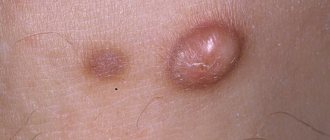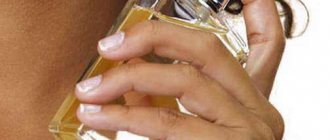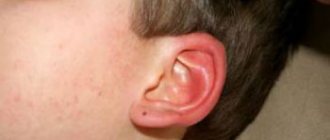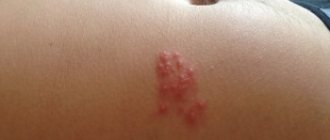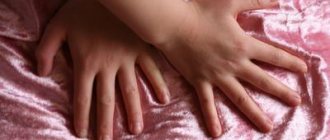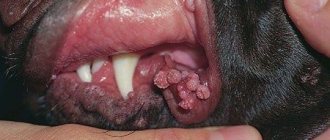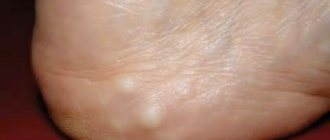If your fingers itch and swell, this may be one of the first signals that unfavorable changes have occurred in the body. Of course, such a nuisance often appears after intense training or excessive physical labor, and this is absolutely normal. It is not considered a pathology, since it goes away on its own over time.
But it happens differently. If your fingers are swollen and itchy, this may indicate illness. Which one? How to get rid of a symptom and the factor that provoked its appearance? Let's look at this in more detail.
Symptoms of hand swelling
If the hand is swollen, then it is easy to notice with the naked eye, simply by comparing it with the hand of another person. As a rule, the process of swelling of the hands begins with swelling of the fingers. You can conduct a mini-test: apply a little pressure on the supposedly swollen tissue; on healthy skin, the imprint will disappear quickly.
Often the swelling of the left hand is much stronger than the right. The reason is that the left arm is less exposed to various loads, and therefore the blood flow in this limb is slower.
Swelling of the hands is usually detected in the morning and disappears during the day. But even in this case, it is worth seeking advice from a specialist. If such a problem is chronic, this indicates serious dysfunction of some internal organ. It is necessary to consult a doctor as soon as possible, even in the complete absence of pain.
Infectious and inflammatory skin diseases
The appearance of redness, itching, and swelling of the skin on the hands may be a consequence of the development of inflammatory processes. It is important to understand that many of them are infectious in nature and are contagious.
Psoriasis
A rash on the crook of your arms, especially on the outside of your elbow, may indicate psoriasis. The pathology has a predominantly “nervous” etiology. That is, it often develops against the background of severe and prolonged stress and nervous disorders. Although it is possible that psoriatic small red spots may appear on the hands due to pathologies of internal organs.
Causes of hand swelling
Let's try to get acquainted with the most common reasons why the hands swell.
Poor nutrition
Swelling of the hand can be the result of drinking too much of any liquid shortly before bed. Overeating, drinking alcohol and salty foods can also cause swelling of the limbs. By reviewing your diet and diet, you can easily get rid of this phenomenon.
Pregnancy
Swelling of the hands occurs very often in late pregnancy. This phenomenon is associated with the occurrence of the so-called tunnel syndrome, when fluid stagnates directly on the wrists, causing impact (pressure) on the nerve, so often with severe swelling, the hands hurt. Diet and a healthy lifestyle are the best prevention of edema. But you should still tell your doctor about such problems.
Injury
Bruised hand or broken finger. In this case, inflammation is a natural reaction of the body. It is necessary to apply a cold compress and consult a traumatologist.
Allergic reaction
Hands may become swollen and itchy after contact with various detergents. By eliminating the allergen, the swelling will go away on its own within 24 hours. To alleviate the condition, you can take antihistamines.
Medicine
The swollen appearance of your hands could be a side effect of taking a new medication. It is worth stopping taking the drug and contacting the doctor who prescribed it to you to replace or reduce the dosage.
Kidney disease
For the most part, edema is associated with kidney diseases, because they are responsible for the balance of water in the body. In addition to the hands, other parts of the body may swell. Characterized by general poor health and problems with urination. You should not treat it yourself; serious consequences are possible.
Heart failure
Most of all, swelling at night occurs due to heart failure and deterioration of blood flow. Features of such edema: develop slowly, are symmetrically located, and are accompanied by shortness of breath. As heart failure increases, cardiac edema develops. They start from the feet and rise higher as the disease progresses.
Lung diseases
Swelling of the arms can also be a symptom of the development of lung disease if it is accompanied by enlarged lymph nodes in the armpits. It is extremely important to contact your GP and begin treatment.
Ways to get rid of the defect
As already said, it is imperative to establish the cause of the poor appearance of the hands, otherwise the problem will return after a while. Depending on what caused the disease, effective treatment is prescribed. If the redness is caused by an allergic reaction, then it is imperative to limit contact with the irritant and take antihistamines. During therapy, it is recommended to avoid new foods, cosmetics and medications, so as not to worsen the situation. A rash caused by a skin disease is treated with ointments based on hormones or antibiotics. Sometimes it is necessary to isolate the sick person from surrounding people during infectious diseases (scabies, lichen). Getting rid of the signs of eczema and psoriasis should be under the supervision of a specialist. Redness in the hands with damage to the central nervous system is treated with sedatives aimed at normalizing the patient’s condition. In this case, the rash goes away on its own some time after taking Novo-Passit, Motherwort, and Valerian tincture. In cold weather, the dermis of the hands must be protected. Fat creams, essential oils, as well as products aimed at cell regeneration are suitable. One of the effective creams is Panthenol; it should be applied before going outside, as well as after. Redness on the skin of the hands is often a cause of concern for men and women. This problem most often indicates hypothermia of the dermis or an allergic reaction, but may indicate serious problems in the body. Treatment does not take much time if you approach the issue carefully and consult a specialist.
Painful swelling of the hand
Rheumatism
Very often the cause of hand swelling is rheumatism. This is a systemic inflammatory disease of connective tissue, mainly affecting the joints in the body. Clinical picture: the joints of the hands hurt, swelling appears in the affected area, itching, and fingers go numb. Rheumatism is a very serious and dangerous disease, as it can spread to the skin, internal organs and affect the brain. If you refuse treatment, “rheumatoid” nodules appear on the skin, and joint mobility may be lost. It is impossible to get rid of the disease completely, but it is very important to start therapy for rheumatism in time and stop its development.
Arthritis
Arthritis of the hands does not only occur in older people; it is characterized by swelling of the hands and severe pain. The cause is usually an infection. The peculiarity is that the disease develops quickly and leads to loss of hand mobility. The patient loses not only his ability to work, but also the ability to cope independently in everyday life. The main thing is to consult a doctor in a timely manner and follow the treatment prescribed by him, then the destruction of the joints can be stopped
Arthrosis
An age-related chronic disease characterized by gradual deformation (wear) of cartilage plates. The most common joint disease in the world. Treatment requires an integrated approach, possibly surgical intervention.
Lymphedema
A condition of swelling of the soft tissues of the extremities. It occurs due to a failure in the outflow of fluid through the lymphatic vessels. Symptoms: pain, weakness, limited joint mobility, the skin in the affected area becomes thick and pale.
Treatment
What to do if swelling of your hands prevents you from doing your usual activities? The first thing that is necessary is to find out the reason for this phenomenon. You can do this yourself, but we recommend that you consult a specialist, as you should not underestimate the problem of edema. Before going to the doctor, you can ease your condition a little with the help of the following tips:
- It is necessary to improve blood circulation in the wrist by removing any constrictive jewelry
- Limit liquid intake
- Organize contrasting hand baths
- If your joints hurt, then apply painkillers (such as Voltaren, Diclofenac).
- Do some light exercise. It is recommended to perform them in the evening, a couple of hours before bedtime. Swimming, running, cycling, or, as a last resort, light exercise are best.
Your health is in your hands, so it’s worth taking care of them. There are many reasons for hand swelling, and they are different for everyone. Therefore, entrust the solution to your problem to a specialist who can not only make a correct diagnosis, but also prescribe effective treatment.
In the morning, your hands swell; the reasons for the disruption of outflow and fluid retention in the tissues can be different. Edema is not an independent disease, but only a symptom. What is a sign of swelling of the hands in the morning: a pathological process or an incorrect lifestyle?
Causes
Why do my hands swell in the morning?
Wrong lifestyle
In most cases, if your fingers swell in the morning, and the swelling goes away within a few hours after waking up, then the reason lies in your wrong actions last night:
- drinking plenty of fluids before bed
- alcohol abuse
- high salt content in food
- sedentary lifestyle, a lot of time spent at the computer
There is another possible reason why my fingers swell in the morning - incorrect, uncomfortable posture while sleeping. At night, the limb could be crushed or pinched, resulting in swollen hands in the morning.
Overweight and obese people suffer from swelling of the extremities. Frequent stress and lack of sleep also provoke swelling.
By eliminating these provoking factors, you will get rid of such a problem as swelling of the hands in the morning.
Pathological processes in the body
When morning swelling becomes chronic and can last throughout the day, most likely this is a signal of a disease of the internal organs.
Hands swell in the morning after sleep due to diseases of the heart (heart failure), kidneys (nephritis), liver (cirrhosis).
Hormonal imbalance and disruption of the thyroid gland are also pathological processes, one of the symptoms of which is swelling of the hands.
If you have the slightest suspicion of a serious illness, which is indicated by morning swelling, immediately contact your doctor. He, in turn, will refer you to a series of tests, and, if necessary, recommend which specialist to contact for further treatment.
Allergy
A local allergic reaction is another reason why your hands swell in the morning.
May be caused by contact with various allergens. The most likely in this case are: household chemicals, cosmetics (hand and body creams), medicines. Allergies to insect bites, animal fur, food, and plant pollen are also possible. Associated symptoms will be redness of the extremities and itching. Analyze what could have triggered this condition and completely eliminate the allergen. If you are allergic to a medication, contact your doctor, he will change the dosage or select a new medicine.
If necessary, take an antihistamine (Suprastin, Diazolin), it will relieve the primary symptoms and alleviate the condition. Improvement should occur within 24 hours; if the reverse process occurs, seek qualified medical help.
Why does my right hand swell in the morning?
This condition can be provoked by heavy physical labor (in the case when a person is right-handed). Failure to comply with work and rest schedules. Long monotonous work.
We recommend that you review your work schedule and working conditions. Excessive physical activity is fraught not only with swelling of the arms and legs in the morning, but also with inflammatory diseases of the joints, as well as complete wear and tear of the body.
Inflammatory diseases
Why do my fingers swell in the morning?
This condition can be caused by an inflammatory process. The main symptom of which is pain. Redness and a local increase in temperature are also observed. In most cases, diseases leading to this condition are: arthritis, gout, osteoarthritis. If this process is repeated with a certain frequency, therefore, the disease has become chronic.
What causes acne on hands
The disease occurs in both adults and children. What could it be when babies develop rashes? Children are susceptible to fungal diseases such as thrush or candidiasis.
The disease affects the mucous membrane of the oral cavity, but the fungus can move from the mucous membrane to the skin. The location is considered to be the skin between the fingers and in the area of the nails, which appear in the form of small red spots.
They usually itch and hurt. The etiology of the disease includes many factors. Let's look at each one separately.
Due to an allergic reaction
In most cases, rashes appear under the influence of an allergen.
Intolerance may occur during:
- wearing jewelry;
- food consumption;
- taking medications;
- applying cosmetics;
- wearing rough clothes made of poor quality material.
People complain that pimples on their fingers itch and swell. If left untreated, the rash will become more severe and worsen the patient's condition.
Under the influence of infection
Pimples between the fingers and all over the body also develop due to infectious diseases.
They are typical for patients with:
- rubella;
- scabies;
- measles;
- chickenpox, etc.
READ ALSO: Furuncle under the armpit - causes, symptoms and treatment at home
The disease is caused by pathogenic microorganisms that poison the body and cause an inflammatory process. Acne on the fingers of a child and an adult can manifest itself differently.
During the inspection they find:
- subcutaneous water blisters;
- small rash;
- purulent contents;
- red spots on the hands.
Fungal diseases are also types of infectious lesions. For example, scabies is characterized by watery pimples on the fingers that spread throughout the body.
Against the background of various diseases of internal organs
Various pathologies of the gastrointestinal tract, liver, and blood can cause the disease. When the digestive tract, circulatory system and metabolic disorders malfunction, the skin condition worsens.
Especially with a lack of vitamins and minerals in the body, it gives impetus to the development of pathologies. Darier's disease is considered the most dangerous. It occurs when there is a deficiency of Vitamin A and enzymes that are necessary for the normal functioning of the body.
The main symptom of the disease is spherical nodular rashes on the skin and fingertips. The disease is genetic in nature and is inherited.
A stressful condition, hormonal imbalance, as well as regular violation of personal hygiene rules can provoke metabolic disorders and the development of rashes.
Treatment
Treatment for edema in the morning depends entirely on its cause.
Without consulting a doctor, you can, in accordance with the instructions, take a diuretic drug (Furasemide), it will remove accumulated fluid from the body and relieve swelling. Having removed the primary symptoms, still consult a doctor for an accurate diagnosis.
Put things in order in your diet, work and rest schedule:
- Eat more fruits and vegetables
- Drink the required amount of clean water (1.5-2 liters per day). But try to consume it in the first half of the day so as not to overload the kidneys at night.
- Play sports
- Spend more time outdoors
- Sleep at least 8 hours a night
- Limit the amount of salt in food
If you suspect diseases of internal organs or inflammation in the joints, consult a doctor immediately! Self-medication can lead to irreversible consequences.
Inflammation of the nail
With periungual panaritium, a person experiences excruciating pain that disturbs sleep and interferes with everyday activities. The inflammatory process in the soft tissues around the nail occurs for a number of reasons:
- Ingrown nail;
- Diabetes;
- Failure to comply with sanitary standards when performing a manicure;
- Poor circulation in the hands;
- Nail fungus (onychomycosis);
- Violation of the integrity of the skin (cuts, abrasions, injections).
The main symptoms of periungual felon include:
- Redness and swelling of the skin in the periungual area;
- Intense pain, which intensifies when you move your finger and at night. Periungual panaritium is characterized by throbbing or jerking pain;
- As the purulent contents spread deep into the dermis, a characteristic pale stripe forms around the nail;
- In the area of the purulent-inflammatory focus, compaction and a local increase in temperature are felt;
- As subcutaneous fatty tissue is involved in the process, body temperature and symptoms of malaise increase.
For the conservative treatment of periungual felon, warm baths with a solution of potassium permanganate (manganese), as well as applications with Levomekol, Vishnevsky ointment or Dioxidine ointment are used.
Folk remedies for the treatment of swelling of the hands and fingers
- Swelling goes away if you drink a mixture of juices: mix medium-sized lemon juice with freshly squeezed cucumber juice and carrot juice (½ cup each). Divide the resulting mixture into 3 parts, drink diluting 1:1 with warm boiled water - 3 times a day.
- An excellent diuretic for edema is the infusion prepared according to the following recipe. 100 g of fresh birch leaves are poured into 1 liter of boiling water, left in a warm place for 5-6 hours and filtered. Take 150 ml 3 times a day.
- For swelling of the hands and fingers, grate peeled beets and potatoes, apply the pulp to the swollen areas, wrap in cellophane and tightly wrap the “compress” with cotton cloth or a terry towel. Keep for at least 20 minutes.
- A decoction of flax seed is also quite effective: pour 4 teaspoons into 1 liter of water, boil for 15 minutes, leave for 1 hour. Take 200 ml warm 4-6 times a day.
Swelling of the hands and fingers in the morning, despite the discomfort it causes and the unaesthetic appearance, helps you pay attention to your health, review your habits, consult a doctor in time and prevent a severe course of the disease. Don't ignore this symptom and stay healthy!
Each person's hand sizes are different in the morning and at night. This is due to water metabolic processes in the body. Not everyone thinks seriously about the symptoms of serious diseases of the internal organs: kidneys, heart or liver. In addition to the limbs, the following areas swell: the face, neck, lips and eyelids.
If there is frequent swelling of the extremities, a visit to the doctor is mandatory to identify chronic inflammation.
Those who wear rings notice that in the morning it is much easier to remove it from the hand, but at night the fingers swell and it is impossible to cope with the task without soap. Let's look at why this happens and how to deal with the consequences.
Prerequisites for swelling of the limbs
Water is removed from the human body by the kidneys, and they rest at night with the owner. Excess moisture in the extremities is not completely removed and the process of accumulation under the skin begins. Swelling of one of the hands is observed; you can compare the size of the hand with the second. If both are swollen, then the disease can be determined by pressing on the tissue: the whitened mark from the compression will not go away immediately. In the normal state of the body, the skin restores its natural shade in a period of no more than 5 seconds.
For occasional and minor swelling of the hand, there is nothing to worry about. The body returns to its normal state in a few hours and does not feel any consequences. The only cause of concern is swelling of the limb, which does not go away for a long time: a day or more.
Natural causes
There are many causes of natural edema:
- Drinking too much water before bed;
- A busy day in terms of physical activity;
- Heavy meals after 18 pm;
- Hot summer season;
- Wearing accessories and clothing that block blood flow.
- Smoking and alcohol cause fluid to accumulate in unpredictable places on the body: the face, legs or brain.
Periodic swelling of the limb is caused by malfunctions of the internal organs of the body and there is a risk of developing a malignant disease. A visit to the doctor and examination will not be superfluous; it is simply necessary to protect yourself. In addition to the hands, people often experience swelling in their feet.
There are practical examples when a person is forced to change shoes 6 times during a working day.
The size of your feet increases so much that you have to wear shoes 2 sizes larger. This is explained by harmful working conditions “on your feet all day”. The legs swell due to kidney failure, osteochondrosis, salt deposits and cardiac complications.
Swelling of the limb as consequences or symptoms of disease
Causes of complications requiring consultation with a doctor:
- Swelling during pregnancy;
- Consequences of infectious diseases, in particular after prolonged constipation or diarrhea;
- Thick fingers, face, arms or legs that don't fall off;
- Unexplained fever and headaches, as well as general ailments;
- Blood clot formation;
- An allergic reaction to foods, animals or plants develops rapidly and may require emergency services.
Prerequisites for which your hands swell and your fingers become thicker:
- Mechanical tissue damage: resolve with a cold compress and ointments.
- Swelling as an allergic reaction to a chemical.
- Inflammatory processes in the thyroid gland and swollen fingers in the morning are inextricably linked. In this case, a visit to an endocrinologist is recommended.
- Excessive exercise that puts stress on your arms can be harmful. People who work physically experience thickening of the limbs at night.
- Sedentary lifestyle.
People who are overweight do not notice how their legs and fingers swell. Healthy swelling of the limb is characterized by painless conditions when pressed. Complications are caused by swelling, cyanosis and hard lumps. The site of swelling burns and itches until pain appears in the tissues.
Particular attention should be paid to the lymph nodes that penetrate the arms: axillary and elbow. Enlarged nodes indicate ongoing inflammation in the organs.
How to deal with swelling of the limbs?
- Find the source of the complication and try to exclude: inflammation, impaired food intake, excessive stress or discomfort from clothing and shoes. Fingers swell from jewelry and overload from heavy handbags hanging on the elbow.
- Proper nutrition is prohibited: smoked foods, salty foods, alcohol, gas water and hot spices. Limit yourself from monosodium glutamate, which retains water in the body for a long time. The diet includes foods: sour berries, watermelon, celery, rowan juice, viburnum.
- Simple exercises for the limbs will not allow fluid to stagnate and will help remove water naturally. Athletics: running, morning exercises. Walking in fresh air will ensure the supply of oxygen to the body. Preventive procedures: bath, sauna, massages in places where swelling is observed. The bath is taken at least once a week. Use a contrast shower and cold lotions to reduce swelling of the fingers once a day.
- If, with constant swelling of the extremities, reduced water consumption is revealed, it is recommended to drink at least one and a half liters of clean liquid per day. Not everyone trusts the doctor with such advice, but in practice there is such a paradox: for watery swelling of the extremities, take more water during the biological clock. This advice can only be given by a doctor based on the results of an examination of the patient. Making an independent decision about treatment can lead to dire consequences.
The answer to the question of why your hands swell may indicate serious health problems. Similar symptoms occur not only in older people, but also in relatively young people. If such phenomena occur, then they may indicate a dysfunction of some organ. You need to pay special attention to your health if swelling manifests itself differently on both hands: 1 hand is more swollen than the other.
Hands may swell and change in size in the following cases:
Most often, swelling of the hands occurs due to acute thrombosis, which occurs as a result of excessive physical effort. This applies to young men who are actively involved in sports and those whose profession involves physical labor.
Symptoms of acute thrombosis:
- dense swelling of the upper limb, extending to the arm from the shoulder;
- burning and heaviness in the hand;
- increase in limb circumference;
- cyanosis;
- If you press on the site of swelling and remove your finger, the hole does not appear.
When physical activity is eliminated, these signs disappear and the disease becomes chronic. And then the symptoms make themselves felt after physical work is resumed. Pain and swelling will appear again.
Causes of inflammation of the joints on the fingers and its treatment
The most common pathology of the hands is inflammation of the joints of the fingers, or arthritis. It must be emphasized that arthritis of the hands is not a separate disease, but only its manifestation, that is, damage to small joints can be caused by several separate nosological forms, the treatment of which is radically different. Therefore, establishing an accurate diagnosis is an important undertaking, both from the point of view of treatment and further prevention. In no case should one limit oneself to a syndromic diagnosis.
Symptoms
Have you been trying to heal your JOINTS for many years?
Head of the Institute for Joint Treatment: “You will be amazed at how easy it is to heal your joints by taking every day...
Read more "
If for some reason a joint on a finger becomes inflamed, then a person experiences the following complaints and symptoms of the disease:
- Pain. There is not a single pathology that is accompanied by inflammation and does not manifest itself as painful sensations in the affected area. The pain is usually constant and intensifies when touching the inflamed area and with movement. In some cases, it is accompanied by a feeling of stiffness or swelling in the joint.
- Edema. A joint damaged by arthritis swells and increases in volume (sometimes several times). The skin over it is taut and shiny. Due to swelling, the range of motion in the fingers decreases. They can take on a sausage-like shape, or the shape of a sausage or rosary.
- Redness of the skin over the sore joint. As a rule, the skin over the area of inflammation turns red, sometimes acquiring a bluish tint.
- Increase in local temperature. The area of the diseased joint becomes hot to the touch compared to healthy areas of the body (a sign of active inflammation).
- Deformation of the fingers. In the case of acute arthritis, the deformity is temporary and caused by swelling of the damaged joint. If the arthritis is chronic, then the deformities become persistent and are caused by damage to the ligamentous apparatus of the finger joints and bone and cartilage tissue. In some diseases, for example, rheumatoid arthritis, such hand deformations are considered a pathognomonic sign or “calling card” of the pathology. They often lead to loss of hand function.
- Loss of normal function. The cause of loss of hand function can be pain, swelling, which is temporary and reversible, as well as permanent deformities of the finger joints, which in most cases are irreversible.
It is important to remember that all of the above symptoms are not specific and can occur in almost all types of inflammation of the finger joints. In an accurate diagnosis, an important role is played by the characteristics of a particular symptom, some other signs, as well as additional examination methods.
According to the clinical course, inflammation of the joints of the fingers can be acute and chronic, as well as chronic with periods of remission. One joint or several may become inflamed. The lesions may be symmetrical (more typical of rheumatoid arthritis) or asymmetrical.
Below are the most common causes of inflammation of small joints (90% of cases).
Polyosteoarthrosis
This disease accounts for approximately 40% of cases of inflammation and pain in the joints of the hands. Mostly older people suffer from this pathology, with women being twice as likely as men.
Polyosteoarthrosis of the hands is a special clinical form of deforming osteoarthrosis (degenerative-dystrophic disease of the musculoskeletal system).
The main complaint of patients is pain, which is monotonous and intensifies after performing movements, at the end of the working day and at night. The disease is chronic. Also characteristic is the deformation of the hands - “knotty fingers”.
On the dorsal and lateral surfaces of the distal and proximal interphalangeal joints, special nodules (Bouchard and Heberden) appear, which tend to be symmetrically located. Some patients complain of burning and pain in the nodules, while in others they are asymptomatic.
Rhizarthrosis
This is an arthritic lesion of the first finger of the hand, and the metacarpophalangeal joint suffers. As a rule, it is part of polyosteoarthrosis, but in approximately 30% of cases it occurs as an independent disease. People who, due to their duties, overload the thumb of the upper limb, especially often suffer from this form of inflammation.
Rheumatoid arthritis
This is a systemic autoimmune disease of the body that primarily affects the small joints of the body, including the fingers of the upper extremities.
Characteristic symptoms of rheumatoid arthritis:
- Women are more likely to get sick;
- Most often the metacarpophalangeal and proximal interphalangeal joints of the middle and index fingers are affected;
- arthritis has the character of polyarthritis (several joints are affected), and the process is symmetrical on both hands;
- inflammation is accompanied by muscle weakness of the hands, a feeling of stiffness in the hands;
- the pain intensifies at night and in the morning;
- the process is chronic with periods of remission.
Rheumatoid arthritis is a serious disease that, if prolonged without adequate treatment, leads not only to damage to the musculoskeletal system and disability, but also to damage to internal organs, which can be fatal.
Infectious arthritis
Infectious arthritis is a direct (injury penetrating the joint) or indirect (introduction of pathological microorganisms into the joint by blood) infection of the joint cavity by infectious agents. This inflammation most often occurs in the form of acute monoarthritis (only one joint becomes inflamed). Accompanied by all signs of inflammation, and pronounced ones, there are no specific symptoms.
It is necessary to treat infectious arthritis taking into account the pathogen that caused the inflammation (antibacterial therapy). As a rule, this pathology responds well to treatment and does not leave any consequences.
Gouty arthritis
A metabolic disease such as gout causes inflammation of the fingers in 5% of cases. The basis of the disease is a violation of purine metabolism in the body, which is accompanied by the accumulation of uric acid, which is stored in the form of salts in organs and peripheral tissues, for example, the lining of the joints. The latter causes their inflammation.
Although gout is characterized by damage to the first toe, there are also variants of gouty arthritis involving the hands.
Men get sick more often. Arthritis is not symmetrical. Any fingers can be affected, but most often the thumbs. A characteristic sign of such inflammation is its paroxysmal nature. Inflammation begins with sharp pain (which sometimes wakes people up at night), redness and swelling of the affected finger.
The same banned issue for which Ernst fired Malakhov!
Joints and cartilage will be cured in 14 days with the help of ordinary...
The treatment of gouty arthritis is based on a diet with a reduced amount of purine substances (diet No. 6 according to Pevzner), medications that reduce the amount of uric acid in the body, anti-inflammatory drugs and folk remedies.
Psoriatic arthritis
Inflammation of the joints of the fingers on the upper extremities as a complication of psoriasis (skin disease) occurs in approximately 3-4% of arthritis in this localization. Most often people get sick between the ages of 30-50 years.
A characteristic sign, but not a mandatory one, is the presence of psoriatic rash elements (red itchy plaques covered with scales) on the skin of the body or scalp.
Psoriatic arthritis has a very characteristic clinical picture - all joints of one finger are simultaneously affected, which leads to the fact that almost the entire finger becomes inflamed and looks like a sausage (“sausage finger”). Arthritis is asymmetrical.
In conclusion, it must be said that the treatment of each individual form of arthritis of the fingers is radically different. For example, for gout, specific hypouricemic therapy is prescribed, and for rheumatoid arthritis, immunosuppressive medications are prescribed. Therefore, in each case the diagnosis must be verified, for which it is imperative to seek medical help. Otherwise, you risk not only your hands, but also your health in general.
Comments
Guest — 02.20.2017 — 00:24
- answer
Add a comment
- My spina.ru © 2012—2019. Copying of materials is possible only with a link to this site. ATTENTION! All information on this site is for reference or popular information only. Diagnosis and prescription of medications require knowledge of the medical history and examination by a physician. Therefore, we strongly recommend that you consult a doctor regarding treatment and diagnosis, and not self-medicate. User AgreementAdvertisersContents:
- Lumps and growths on the knuckles of the fingers
- Why do they appear?
- What danger exists?
- What species are found?
- General symptoms
- Recommended diagnostics
- Treatment methods
- What preventative measures to take
Lumps and growths on the knuckles of the fingers
So, all formations on the joints of the fingers are an external manifestation of internal diseases. They appear in older people, but sometimes middle-aged people become owners.
They are especially common in women. These skin seals cause pain and contribute to joint deformation. Ultimately, they can lead to immobility of several joints.
Why do they appear?
There are many reasons why bumps, growths, and knots appear on the phalanges of the fingers:
- Ecological factor (environmental influence).
- Hereditary (genetic) factor.
- Violation of metabolic processes.
- Inflammatory processes.
- Infectious diseases caused by bacteria and viruses.
Degenerative-dystrophic processes:
- Arthrosis.
- Arthritis.
Conditions and lifestyle:
- Regular hypothermia of the hands.
- Physical activity, including sports.
- Injuries, operations.
What danger exists?
The bumps and growths themselves do not pose a threat to the human body. But since they appear as a result of certain diseases, it would not be far-sighted to leave them without attention.
The presence of various formations on or under the skin makes it difficult to move the joint, leading to the progression of the underlying disease, which means pain, joint destruction, and disability.
It is necessary to take a closer look at what skin formations there are and what causes them.
What species are found?
Hygroma is a benign tumor formed from the articular membrane. Usually located above the joint towards the nail plate. The skin around the bump becomes inflamed, red and itchy. There are grains inside the cone. The nail may become deformed. The pain is nagging. The finger bends poorly and goes numb.
To eliminate hygroma, it is recommended to remove the load and use an elastic bandage. The main reason for its occurrence is hereditary predisposition. It mainly affects women under 30 years of age.
Gout is a nodular formation containing uric acid in crystals. It has a hard consistency, reminiscent of cartilage with clear contours. It is visually clear that there is a light liquid inside. Gout forms near the joint over a long period of time. If the node becomes inflamed, a fistula may appear from which fluid leaks. The skin around the bump is rough and uneven.
Sometimes they can soften and dissolve. In general, gout exists for many years, causing discomfort.
Heberden's and Bouchard's nodes are hard formations on the joints (distal, proximal) of the index and middle fingers of both hands. It mainly affects women in adulthood. The fingers become red and swollen, and the person feels pain, especially at night. Sometimes the nodules may burst. The bone surfaces are uneven, the gap narrows, and osteophytes grow.
Rheumatoid nodules (arthritis) are painless lumps. Formed on the bend of the finger under the skin. Make it difficult to move your finger. Occurs in 30% of the population. The joints on the index and middle fingers usually swell. The pain spreads from the knuckles to the large joints of the hand. Due to the seals, the fingers become deformed. In the morning they are difficult to bend, and by evening they swell.
Infectious bumps (arthritis) - lumps form on the tendons of the thumbs, sometimes on the ring and little fingers. The patient feels pain when bending and straightening. The joints on these fingers become swollen and the skin becomes red and hot to the touch.
General symptoms
Depending on the type of growth or lump, symptoms will appear. One disease can provoke the appearance of one or more bumps. And the other also involves systemic manifestations.
The buds can be the size of a pea or the size of a large bean. Consistency ranges from soft to dense. Location: dorsal, palmar, lateral side of the finger joints.
Mobility is maintained or impaired due to adhesion to adjacent sections. When moving the joints, unbearable pain or complete painlessness may occur.
Recommended diagnostics
A more effective treatment is one that is carried out in the early stages of the disease. But to get the right treatment, an accurate diagnosis is necessary.
First of all, you need to contact a specialist (orthopedist, rheumatologist, traumatologist). He will examine and interview the patient and collect anamnesis.
Assign:
- Blood analysis of general and detailed form.
- Histological examination of the contents of the lump, which is removed by puncture, to exclude a malignant tumor (lipoma).
- X-ray or MRI of the joint where the growth or lump has formed.
- ACCP for rheumatoid nodules.
The latter analysis is the most accurate in the early stages of the disease with rheumatoid arthritis.
Treatment methods
Medication. Nonsteroidal anti-inflammatory drugs: Nimesulide, Meloxicam. Painkillers: Ketanov, Dexalgin. Antibacterial drugs: Ceftriaxone, Amoxiclav.
Chondroprotectors: Teraflex, Artra. For gout: Purinol, Anturan. Cytostatics: Cyclofosva, Methotrexate. Hormonal drugs - Hydrocartisone. Hyaluronic acid (injections).
Ointments, creams, and gels with analgesic and anti-inflammatory effects are used locally.
Physiotherapeutic procedures. UHF, electrophoresis, ultraviolet irradiation, magnetic therapy. Paraffin applications and mud therapy have proven themselves well. All these procedures relieve swelling, inflammation, and pain. Improve metabolic processes and increase blood circulation.
After the acute period, physical therapy is indicated. A salt-free diet also promotes recovery. It is recommended to drink more water (up to 2 liters per day).
In combination with the main treatment, traditional methods of treatment can be used.
If conservative methods do not provide a positive effect, then surgical treatment is considered. An operation to remove tumors on the hands is called a bunionectomy.
What preventative measures to take
Prevention measures include a healthy lifestyle, good nutrition, moderate physical activity, timely rest, and avoiding hypothermia and injury. At the first symptoms, seek diagnosis from your family doctor, and he will refer you to a specialist doctor.
Other reasons
Unilateral swelling of the arm can occur in an elderly person due to a tumor that compresses the subclavian vein. Unlike acute thrombosis, in this case the arm does not hurt and does not swell as much. Swelling develops gradually. Along with the subclavian vein, the innominate vein may also be compressed. Then part of the face and neck swells and turns blue.
A purulent disease on the skin of the hand can be complicated by inflammation involving the lymphatic vessels. Then the cause of edema becomes lymphangitis. Other symptoms include fever, feeling unwell, noticeable swelling of the limb, redness and increased temperature in that part of the body. The lymph nodes are enlarged and will be painful to palpate.
In women, the arm swells due to impaired lymphatic drainage, which occurs after surgery to remove the mammary gland.
Swelling of the upper extremities is not always a symptom of a serious illness.
Older women sometimes swell their arms and legs for no particular reason, especially in the hot season. Swelling of the arms occurs in the mornings, and swelling of the legs occurs in the evenings. Tests will show normal health. Sometimes such phenomena are associated with pregnancy or premenstrual syndrome.
Swelling of the upper extremities can be accompanied by swelling of the face, legs and become a consequence of pathologies associated with dysfunction of the cardiovascular, endocrine and kidney systems. Therefore, it is important to undergo an examination and take the necessary tests to choose the right treatment methods.
Swelling is caused by some medications.
- Use of diuretics. The doctor will help you choose the right medications, because some of them are not recommended to be taken for a long time due to the fact that they can negatively affect the functioning of the heart. For example, Lasix and Furosemide remove potassium needed by the heart.
- Folk diuretics - watermelon pulp, green tea, burdock root decoction, cornflower flower infusion, lingonberry leaf decoction will help cope with swelling of the hands. But you should not abuse fluid intake so that it does not accumulate in the body.
- You should remove rings and bracelets that squeeze your hands and fingers, impeding blood circulation.
- You shouldn't carry heavy things. Vessels are compressed and blood flow is disrupted if you constantly wear bags on the elbow.
- The appearance of swelling is promoted by the consumption of alcohol, spicy and salty foods. These foods and drinks cause fluid to accumulate and should be avoided.
- It is better to refrain from eating a few hours before bedtime. You will have to limit your fluid intake during the day, not only in the form of water and tea, but also eat less soups, drink milk and fermented milk drinks.
- If your limbs are constantly swelling, you need to take care of proper nutrition, including in your diet those foods that will help avoid swelling. It is better to give preference to cottage cheese, kefir, rowan, viburnum, watermelon, and celery.
- There is no need to stay in a stuffy room for a long time. Even in the cold season, the room must be ventilated.
- Exercise will improve blood circulation and help increase muscle tone.
- A contrast shower improves blood circulation. Bath procedures will be useful. An excellent remedy against swelling is baths with the addition of sea salt. To do this, it is better to take salt without additives: 300 g will be enough for 1 bath. Water should not be higher than +37°C.
Folk recipes
Traditional medicine knows a lot of recipes for effectively combating redness of the skin of the hands. So, you should pay attention to the following recommendations:
- If your hands get frostbitten in the cold, rub them with any pine-based essential oil. It is better to mix it with cream, which will make it easier to glide. But under no circumstances put your brushes into hot water.
- If your hands become red as a result of overheating in the sun, do not put them in ice water. Better take a cool bath with sea salt. Mint infusion also works well. After completing the procedure, apply nourishing cream to your hands.
- Green tea will help eliminate irritation. It makes an effective hand bath. After holding your brushes in it for 5-10 minutes, blot them with a napkin, but do not wash off the tea.
- A mask made of rice or potato starch will eliminate redness, itching and peeling. Add chamomile infusion and lavender oil to the main component. The consistency of the mixture should resemble sour cream. Keep the mask on your hands for 15-20 minutes.
Preventive measures
If you have sensitive skin on your hands, you need to pay special attention to preventing redness. Pay attention to these useful tips:
- perform all household chores only with gloves to prevent skin contact with aggressive detergents and water;
- during the cold season, wear gloves or mittens, and apply nourishing cream 30 minutes before going outside;
- include more healthy foods in your diet that will nourish your skin from the inside;
- wash your hands in warm water (avoid extreme temperatures), using mild cream soap;
- Lead a healthy and active lifestyle, which will strengthen the body's protective barriers and make the skin more resistant to external irritations.
Experts identify many reasons that can cause redness of the skin of the hands. But on your own, you are unlikely to be able to determine what exactly triggered the problem. Even a qualified dermatologist will need some time for this. In any case, redness cannot be ignored.
Conclusion
The appearance of swelling in the hands indicates some kind of malfunction in the body, perhaps even the development of cancer. If 1 arm swells up to the elbow, you should immediately consult a doctor. The doctor will determine the cause of fluid retention and prescribe treatment. Delaying a visit to a specialist is unacceptable, since the disease may progress, and if time is lost, more costs, including financial ones, may be required for recovery.
Swelling of the hands sometimes occurs due to malfunctions of internal organs or serious diseases. Hands swell more in the morning due to the accumulation of excess fluid in the extremities. This can have a detrimental effect on many internal organs. Therefore, when the very first such symptoms appear, you should immediately consult a doctor.
Treatment of red spots on hands
Treatment for red spots on the hands will depend on the cause of their appearance:
- For example, pigmentation that appears as a result of poor nutrition is treated with diet.
- Pigmentation provoked by temperature changes requires careful skin care and avoidance of the provocateur.
- Red spots formed as a result of allergic reactions, infectious diseases and malfunctions in the body require complex therapy, the purpose of which is the initial elimination of the disease and the additional use of drugs and ointments to eliminate skin defects.
Systemic drugs
Systemic drugs for the treatment of red spots are prescribed extremely rarely, mainly for the treatment of pigmentation caused by allergies, stress or vitamin deficiency.
Common medications:
- antihistamines (Edem, Zyrtec);
- sedatives (Glycine, Motherwort, Afabazole);
- vitamins;
- minerals (mainly zinc- and calcium-containing preparations);
- enterosorbing medications (Enterosgel, Laktofiltrum, White or Black coal);
- antibacterial drugs (only as prescribed by a doctor);
- antifungal agents (for lichen);
- antiviral drugs (Acyclovir, Panvir).
Ointments and creams
Local treatment of the problem is considered the most effective way to combat red spots.
The following means are used:
- Radevit - due to the nutrients contained in the composition, the ointment nourishes and softens damaged areas of the skin, additionally eliminating itching. Radevit is prescribed for the treatment of pigmentation due to allergic reactions of the body.
- Traumeel - due to its immunomodifying properties, the drug restores the skin.
- Iricar - prescribed for eczema. The components in the ointment perfectly eliminate burning and flaking, and the spots stop itching.
- Bepanten - due to its regenerating properties, it fights the problem of pigmentation, thereby eliminating the consequences.
- Hormonal drugs are prescribed by specialists for the treatment of psoriasis and dermatitis.
Traditional methods of treatment
Traditional methods of treatment are suitable for eliminating pigmentation related to skin lesions, however, they are very effective for treating red spots on the hands.
Often folk masks are used to stop the rash from itching. To do this, use chamomile (in the form of a decoction) and starch from rice. When mixing the components, a certain creamy-like paste should form, to which you can additionally add a little lavender essential oil and apply it to damaged areas of the skin for 15-20 minutes.
Good to know! More severe irritation is combated with the help of strong, cooled green tea. Hands are dipped into it or cotton sponges are soaked in it and used to wipe the damaged areas of the skin. After 20-25 minutes, you can wash off the tea and wipe your hands with a towel.
Symptoms, definition of swelling
The first symptom of swelling of the hands is swelling of the areas on the fingers. This becomes obvious when comparing swollen limbs with the hands of other people. To make sure that there is swelling in the arm area, you should do a quick test. To do this, apply a little pressure on the affected area of the hand with your finger. After pressing, a dimple will remain in this place, which will very slowly begin to recover.
If you do not take any measures to treat such swelling, it will gradually develop, resulting in pain on the damaged skin and disruptions in the functions of internal organs.
If the swelling is not pathogenic in nature, it goes away after the night and then does not appear again.
If the hands remain swollen even after sleep and do not decrease until the next night, this may be due to dysfunction of some organ.
When a person wears rings, such swelling is especially noticeable, as it will begin to tighten the finger, and it will become almost impossible to remove the jewelry.
Often the swelling of the left hand is much more pronounced than the right. This is explained by the fact that the left arm is less subject to various loads, and therefore slows down the blood flow in this limb.
In the case when swelling is observed for a long time, it is necessary to consult a doctor as soon as possible, even if it does not worsen the person’s well-being.
Causes of deprivation on the hand
There are a number of factors contributing to the development of the disease:
- Low level of immunity
- Chronic diseases
- Frequent skin injuries and infections
- Frequent nervous shocks
- Unstable hormonal levels
- Failure to comply with personal hygiene rules
- The presence of helminths in the human body
- Using detergents that may cause allergic reactions
- Types of lichen on the hand
- The appearance of lichen depends on the pathogen; the following types are distinguished:
- Viral origin - herpes zoster
- Fungal origin - pityriasis versicolor (solar)
- Infectious (fungal) origin - ringworm
- Psoriasis – scaly lichen
- Lichen planus - may occur against the background of severe nervous shock
- Eczema or tinea versicolor – due to decreased immunity
Find out more
Regardless of time
When a person drinks a large amount of liquid before going to bed, swelling in the hands often appears in the morning. This phenomenon is not pathological if it appears once. Overeating and drinking alcohol can lead to the same consequences.
During pregnancy, hand swelling is a fairly common occurrence; it usually develops between 6 and 9 months and is sometimes accompanied by pain. Swelling develops due to the activity of bacteria and microbes that entered the body through abrasions.
This type of swelling can be determined by pressing your finger on this place. This pressure will cause pain. Often, such skin damage leads to fever up to 40 degrees, dizziness and migraines. It is pregnant women who are at risk of developing such swelling, since during this period their immunity weakens, which is why even the smallest wound can cause inflammation.
Constant swelling of the hands that does not decrease within 2 weeks indicates diseases in the human body or injury. The most common reasons are the following:
- bruise or fracture of a finger, in this case inflammation is a natural process that requires mandatory medical attention and cooling;
- allergies to detergents, this type of swelling is treated by limiting interactions with the allergen, very often this reaction occurs due to powders, floor cleaners, dishes, chemicals;
- allergies to foods, unfamiliar dishes or foods can cause swelling of the hands as a consequence of their consumption; to cope with this problem, you need to exclude exotic foods from your menu and take an antihistamine;
- if a person suffers from blockage of blood vessels or increased blood circulation, this can also cause inflammation;
- dysfunction of the thyroid gland can lead to changes in the shape of the fingers and hands; with such a symptom, you need to urgently seek help from an endocrinologist;
- deterioration of the kidneys, liver, as well as heart failure often cause swelling in the extremities;
- lack of rest, poor diet, sleep disturbances and constant fatigue are the most common causes of swelling of the hands, it is worth considering that if you do not change your diet and daily routine, other health problems may follow the swelling, including nervous disorders and internal malfunctions organs;
- Prolonged physical activity can also cause swollen hands.
What diseases cause itching on the hands?
Let's take a closer look at common diseases in which itchy hands are a pronounced symptom.
Eczema
Its nature has not been fully studied. It is believed that the main causes of occurrence are dysfunctions of the endocrine, digestive, and central nervous systems. With true eczema, blisters with serous contents appear, which merge and, after opening, form pink, weeping spots. The chronic form is characterized by the appearance of skin cracks. Occupational eczema is caused by contact with a material containing an allergen, and dyshidrotic eczema develops when the hands sweat.
Psoriasis
Starts from the elbows or hands. Small papules similar to allergic rashes form between the fingers. The patient experiences severe itching. Then gray scales appear, the size of the plaques and the affected area increases, sometimes reaching the shoulders. If you remove the scales, you can see a glossy smooth surface. The disease is non-infectious and is not transmitted by contact or through utensils.
Scabies
A distinctive feature of minor rashes from other skin diseases is increased itching in the evening and especially at night. The areas of the body where blisters appear are as follows:
- between the fingers,
- flexor surfaces of the shoulders and forearms,
- stomach,
- chest area around the nipples,
- armpits,
- feet, ankles.
The initial stage of scabies manifests itself as rashes in the form of small nodules. The advanced form is characterized by the appearance of pustules and bloody crusts.
Allergic dermatitis
Women and children get sick more often. The disease occurs from contact with chemical and mechanical irritants. Other causes include medications, animal dander, and plant pollen. The acute form of dermatitis occurs after interaction with a toxic allergen.
It begins with swelling, hyperemia of the hands and fingers. Later, watery and itchy subcutaneous blisters filled with clear fluid appear. The skin in the affected areas begins to peel off. Prolonged contact with an allergen contributes to the transition of dermatitis to eczema.
Diabetes
Insufficient production of insulin by the pancreas leads to excess sugar in the blood vessels, which cease to function fully and are gradually destroyed. The skin reacts to pathological processes caused by metabolic disorders by drying and flaking. In addition to the hands, the lower limbs, genitals, eyes, and ears itch. Sweating is impaired, which leads to the appearance of ulcers and pustules. It is necessary to take measures to lower blood sugar.
Morning swelling
The appearance of swelling in the hands in the morning is a fairly common occurrence. They usually occur due to drinking large amounts of liquid at night.
Swollen hands in the morning may indicate an allergy to the night cream you used before bed.
Swelling of the hands can be a side effect of taking medications. If the instructions describe such an effect, you should stop using this drug and consult a doctor.
Liver dysfunction is reflected not only by inflammation of the hands, but also of the eyelids in the morning. In this case, it is the toxins that the organ cannot cope with that are the causes of swelling.
Failures in kidney function are manifested by swelling of the hands, eyelids and other parts of the face, especially the areas under the eyes become swollen. This occurs because the kidneys are unable to remove excess fluid from the body, and it accumulates in the soft tissues.
If swelling is located in the arms in the morning and moves to the lower extremities in the evening, this indicates problems with the heart and blood vessels.
With rheumatism and arthritis, pain is often observed in swollen areas. This type of inflammation may not subside for two months.
If the next morning your hands are swollen, and the lymph nodes in the armpits are enlarged and a feeling of pain appears, you should immediately consult a doctor. Serious lung disease can have this effect.
Why do my fingers itch?
Quite often, a rash on the fingers and toes is a sign of a certain disease. To find out the etiology, you should visit a specialist. The conclusion suggests itself - if the rash on the fingers itches and becomes inflamed, it is necessary to look for the cause, and not just deal with unpleasant symptoms.
The rash may appear as a result of:
- Allergies - this can be food allergy, cold allergy, or also provoked by external irritants (exogenous).
- Skin pathologies are the most common cause of rashes on the fingers. If the skin of your hands is covered with a rash, itches and itches, you should contact a dermatologist; these may be the following skin diseases: eczema, lice, scabies, neurodermatitis, urticaria.
- The negative influence of external factors is most often mechanical, chemical or temperature. For example, a small rash on the fingers may be associated with very high or low temperatures or wearing synthetic clothing. People with sensitive and dry skin especially often suffer from this rash. This pathology is called contact dermatitis.
- Problems in the functioning of internal organs. The human body is a single system, and skin rashes may indicate diseases of the liver, gastrointestinal tract, kidneys, thyroid gland, and lymphatic system.
- Too much emotional stress - in this case, a rash between the fingers and other areas of the skin appears in people who are emotional and overly excitable.
- Taking certain medications is a fairly common side effect of tablets and some ointments.
READ ALSO: Abscesses on the body: causes and treatment in adults |
